Electric kettles, a common household appliance in Vietnam, are simple and easy to use. However, many people make critical mistakes that shorten their kettle’s lifespan. Let’s explore some common errors and how to avoid them.
1 Using the Same Power Outlet for Multiple Appliances
Electric kettles have high power consumption. For safety, always plug your kettle into its own power outlet. Avoid using the same outlet for other high-power appliances like rice cookers, electric stoves, irons, washing machines, or water heaters. Doing so can overload the electrical circuit, leading to dangerous situations such as short circuits, fires, or explosions.
 Avoid sharing power outlets with other appliances
Avoid sharing power outlets with other appliances
2 Using the Kettle for Cooking
Many people, especially students, mistakenly use electric kettles for cooking. Kettles are designed solely for boiling water. Using them for cooking can lead to a build-up of residue, which can damage the kettle and even cause electrical faults, leading to fires or explosions.
Follow the manufacturer’s instructions and refrain from using the kettle for anything other than boiling water. If you do use it for cooking, be sure to thoroughly clean the inside to remove any residue.
 Follow the manufacturer’s instructions and don’t use the kettle for cooking.
Follow the manufacturer’s instructions and don’t use the kettle for cooking.
3 Improper Unplugging
When unplugging your electric kettle, always hold the plug, not the cord. Pulling the cord can cause it to crack or break, leading to electrical leaks or shocks.
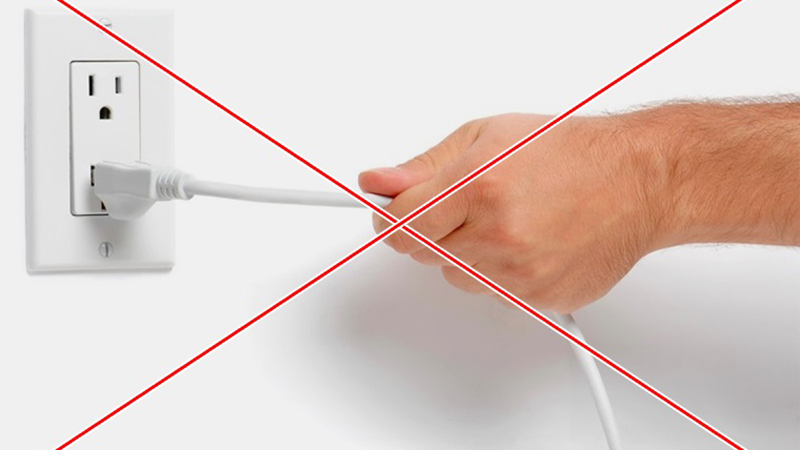 Always hold the plug, not the cord, when unplugging.
Always hold the plug, not the cord, when unplugging.
4 Boiling Water Continuously
Contrary to popular belief, boiling water continuously does not save energy. Each time you boil water, the kettle consumes the same amount of energy, regardless of how hot it already is. Boiling continuously can also cause the heating element to exceed its power limit, leading to fires, explosions, and damage to the kettle. Allow the kettle to rest between boils to prevent overheating.
 Allow the kettle to rest between boils to prevent overheating.
Allow the kettle to rest between boils to prevent overheating.
5 Filling the Kettle Incorrectly
Always fill your kettle between the minimum and maximum water level indicators. Filling below the minimum or exceeding the maximum can lead to electrical faults and explosions.
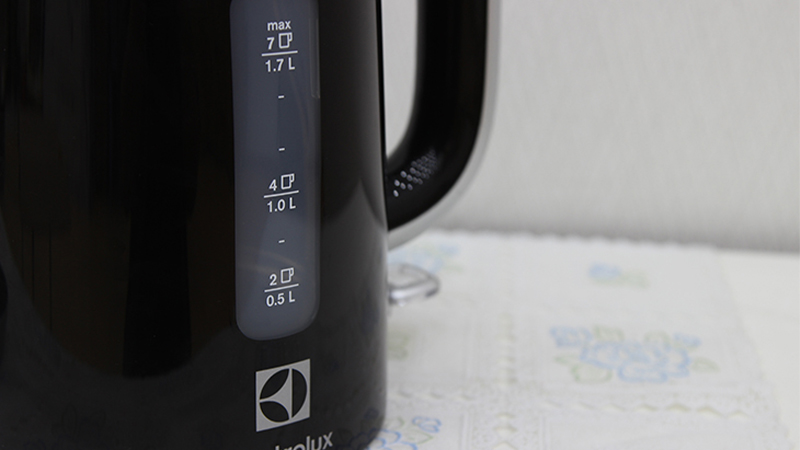 Always fill between the minimum and maximum water levels.
Always fill between the minimum and maximum water levels.
6 Emptying the Kettle After Boiling
Do not empty the kettle completely after boiling. Even after the power is cut off, the heating element remains hot and continues to generate heat. Leaving a small amount of water (about 20ml) in the kettle helps to dissipate this heat and protect the heating element.
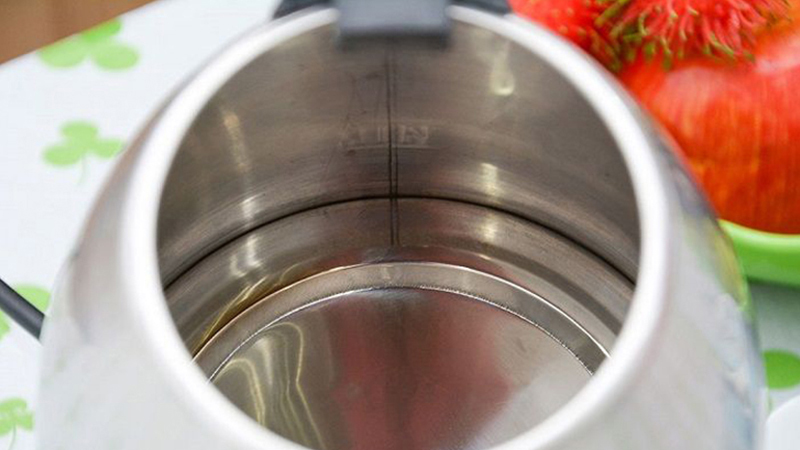 Do not empty the kettle completely after boiling.
Do not empty the kettle completely after boiling.
7 Leaving the Lid Open or Not Properly Sealed
Always ensure the lid is closed securely during boiling. Electric kettles are designed with an automatic relay that cuts off power when the lid is securely closed. Leaving the lid open can prevent the power from being cut off, leading to potential electrical faults and explosions.
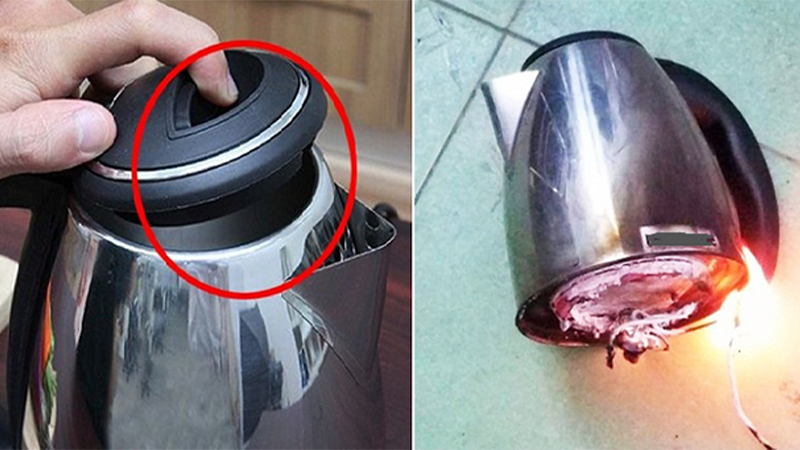 An unsecured lid can lead to electrical faults and explosions.
An unsecured lid can lead to electrical faults and explosions.
8 Not Cleaning the Kettle Regularly
Many people believe that since kettles are used for boiling clean water, they don’t need to be cleaned. This is a misconception. Over time, residue can build up inside the kettle, leading to bacterial growth. Regular cleaning is essential to maintain the kettle’s performance and ensure your health.
Cleaning is simple: mix vinegar and water in a 1:1 ratio, fill the kettle halfway, and gently shake. Boil the mixture and let it sit for 15-20 minutes before discarding it and rinsing the kettle with clean water.
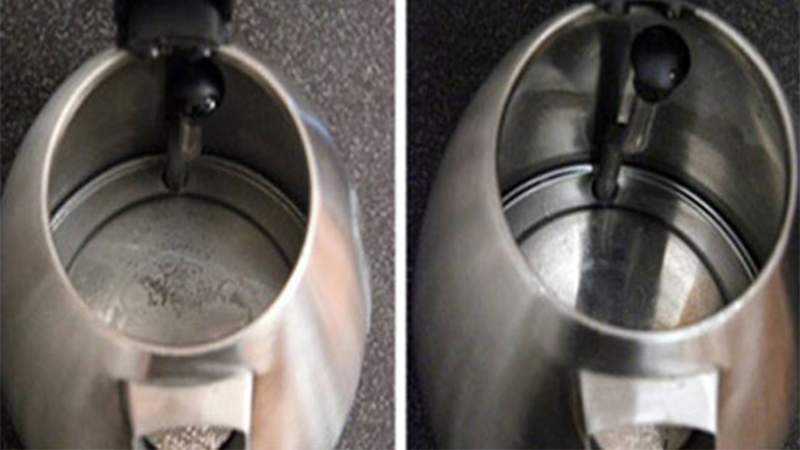 Use vinegar to clean your kettle.
Use vinegar to clean your kettle.
9 Leaving Water in the Kettle for Extended Periods
Leaving water in the kettle for too long can cause a build-up of residue, reducing the kettle’s heat exchange efficiency. This results in slower boiling, thicker residue, and potential damage to the relay, causing the kettle to shut off before the water boils. Regularly clean the bottom of the kettle and avoid leaving water in it for extended periods. Use a soft cloth to wipe the inside to extend its lifespan.
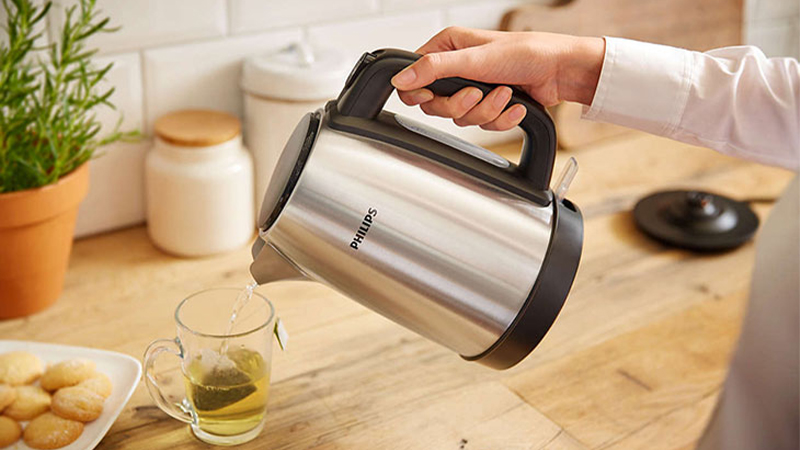 Don’t leave water in the kettle for too long.
Don’t leave water in the kettle for too long.
10 Boiling Water Near Air Conditioners or Fans
Boiling water near air conditioners or fans increases energy consumption. Not only does it waste heat from the kettle, but it also affects the air conditioner’s performance, leading to higher electricity bills and reduced lifespans for both appliances.
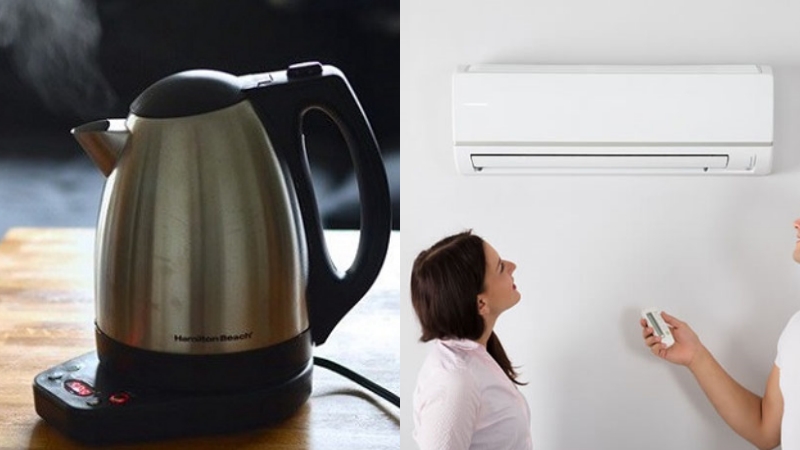 Boiling water near air conditioners or fans wastes energy and reduces appliance lifespans.
Boiling water near air conditioners or fans wastes energy and reduces appliance lifespans.
Warning
If your kettle is old and shows signs of wear, such as a frayed cord, a broken indicator light, or a loose lid, it can pose a safety hazard. The best solution is to replace it with a new one to ensure your safety and that of your loved ones.
These are the top 10 mistakes that can damage your electric kettle and even lead to explosions. We hope that by being aware of these errors, you can adjust your habits and use your kettle safely and correctly.

































